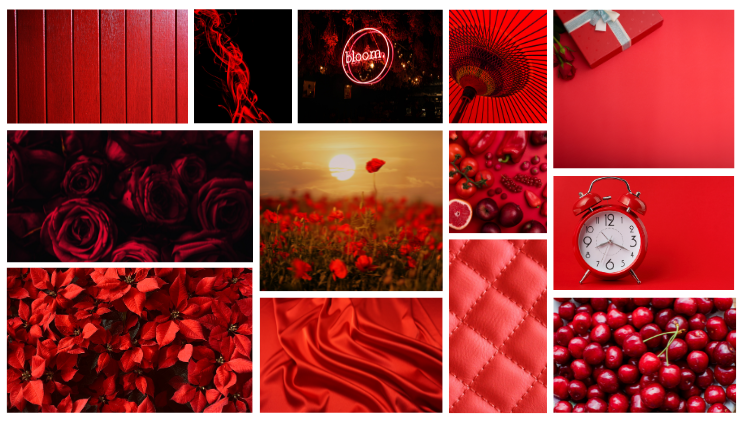Vibrant, bold, and undeniably captivating, the colour red holds a rich mixture of cultural significance, evoking a spectrum of emotions and associations that span centuries and continents.
Whether expressing love and romance or embodying power and strength, red leaves an indelible mark on the human psyche, reminding us of the passion and vitality that colours our world.
In many cultures, red is synonymous with love and romance. It symbolises passion, desire, and affection, making it a fitting choice for expressions of love and devotion. From red roses on Valentine’s Day to crimson hearts on anniversary cards, red serves as a universal symbol of romantic sentiment.
It holds various meanings in Indian culture. It’s associated with purity and fertility and is often worn by brides on their wedding day. Red is also significant in Hinduism, where it represents passion, power, and devotion.
In Eastern cultures, particularly in China, red holds auspicious significance. It is associated with luck, prosperity, and good fortune, making it a prominent colour in festivals, weddings, and other celebratory occasions. Red envelopes filled with money are exchanged during the Chinese New Year to bring good fortune.
In art, it is a powerful tool for conveying emotion and making a statement. Artists use varying shades of red to evoke different moods, from fiery passion to deep introspection. Whether used as the dominant colour or as an accent, red commands attention and creates visual impact.
In design, red is used strategically to create bold and dynamic compositions. It adds energy and excitement to branding, advertising, and packaging, grabbing the viewer’s attention and leaving a lasting impression.
Red is a versatile colour that can be used in interior design to create a variety of looks and atmospheres. Whether used as an accent colour or as the main focus of a room, red adds warmth, energy, and personality to interior spaces, making them feel vibrant and inviting.
It is often associated with intense emotions, particularly passion and desire. It symbolises the fire that burns within us, igniting our spirits and driving us toward our deepest desires.
Red is the colour of love, evoking feelings of warmth, affection, and romance. It symbolises the bond between individuals, whether romantic or platonic and celebrates the connections that bring joy and fulfilment to our lives.
Red is a colour of energy and vitality. It invigorates the senses, energising both the body and the mind. It is the colour of action and excitement, inspiring us to pursue our goals with enthusiasm and determination.
Red is often associated with bravery and courage. It symbolises the strength and resilience needed to face life’s challenges head-on. Like a bold crimson banner, red encourages us to stand firm in the face of adversity and overcome obstacles with courage and conviction.
It exudes power and strength. It represents the force of nature, the unstoppable momentum of progress, and the resilience of the human spirit. Red empowers us to tap into our inner strength and unleash our full potential.
Red is also the colour of anger and aggression. It can evoke feelings of frustration, irritation, and hostility, leading to heated conflicts and confrontations. In its most intense form, red symbolises the boiling point of emotions, where rationality gives way to raw passion.
Red is often used as a warning sign or alert for potential danger. It grabs our attention and signals the presence of hazards or threats in our environment. From warning labels to stop signs, red serves as a visual cue to proceed with caution and stay vigilant.
Red can symbolise aggression and violence, particularly when used in contexts associated with warfare or conflict. It embodies the ferocity of battle, the clash of opposing forces, and the bloodshed that accompanies human strife. It has the power to overstimulate the senses, leading to feelings of restlessness or anxiety. In excess, red can become exhausting, draining our energy and leaving us feeling depleted.
Red can provoke strong reactions and stir up controversy. Its boldness and assertiveness can challenge social norms and push boundaries, sometimes leading to heated debates.
It is also associated with power, strength, and courage. It emanates confidence and vitality, symbolising leadership and authority. In heraldry and military symbolism, red is often used to denote nobility and valour.
The colour red is a double-edged sword, embodying both positive and negative connotations. While it symbolises passion, love, and energy, it also represents anger, danger, and aggression. Understanding the complexities of red allows us to harness its power responsibly, using it to inspire and empower rather than incite conflict or discord.



Leave a comment